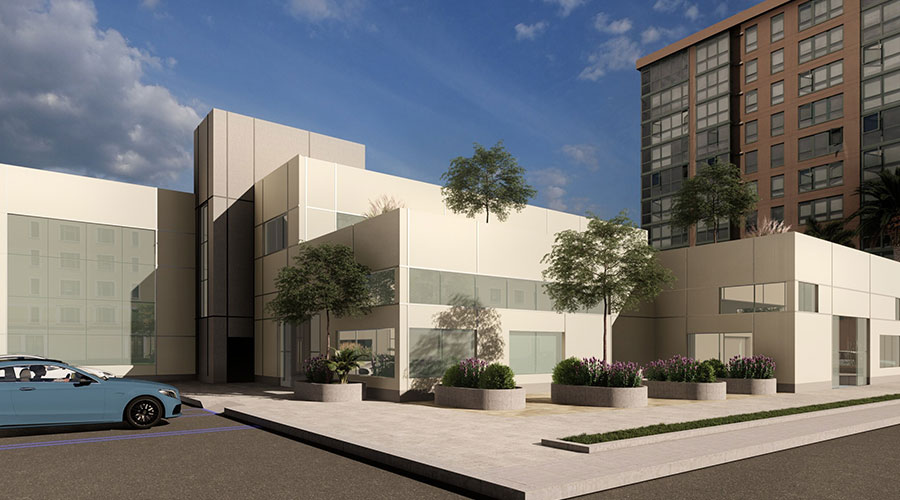Selecting the right design and construction team is pivotal to the success of healthcare construction projects. Several factors go into this decision, including evaluating proposed team members, their project approach and the proposed cost and schedule. While these factors are pivotal, it is important to also consider members' healthcare experience, understanding of healthcare regulations, ability to collaborate and other key factors.
The healthcare industry is evolving so frequently and quickly. Combine this change with the fact that healthcare spaces are highly technical and complex projects to design and build, and choosing the right partner is crucial. These 10 key criteria ensure the chosen design and construction teams will deliver a facility that is safe, functional and tailored to the intricate needs of a specific healthcare setting.
Healthcare-specific experience. All partners involved in a facility project should have a proven track record in construction projects. Experience with similar projects ensures familiarity with healthcare facilities' unique challenges and requirements, whether it is hospitals, clinics or related projects.
Design and construction teams need to ensure new spaces are functional and comply with health regulations. From a design perspective, spaces should prioritize patient comfort, staff safety and the evolving medical care landscape and consider features such as natural light, noise reduction and healing environments.
Technical expertise. The design team should include professionals with expertise in medical planning, architecture and interior design specific to healthcare environments. On the construction side, professionals should be skilled in the nuances of healthcare construction, such as specialized mechanical, electrical and plumbing systems, as well as knowledge about medical gas installations and clean room standards.
Regulatory compliance. Probably more than any other industry, design and construction teams must be well-versed in healthcare regulations, building codes and accreditation requirements, such as the Joint Commission, the National Fire Protection Agency and the Americans With Disabilities Act. This familiarity ensures the new facility meets legal and safety standards. Understanding the standards that organizations and projects must meet helps avoid costly delays and modifications.
Interdisciplinary collaboration. Effective collaboration among architects, engineers, contractors and healthcare providers is essential in delivering a high-quality project on time and on budget. Design and construction teams should have strong communication skills and be able to coordinate effectively with each other. Collaborative planning and execution can identify potential issues early, reducing the risk of costly changes and delays.
Project management skills. Strong healthcare project management capabilities ensure the work is completed on time and on budget. On the design team, the project leads should actively engage with all stakeholders, including hospital administrators, medical staff, patients and the community to incorporate their needs into the design. Once at the construction phase, having project managers with complex healthcare project experience who understand the reporting requirements and processes around scheduling, budgeting and risk management is critical for schedule and budget management.
Related: How to Minimize Patient Interference During Construction Projects
Technology and Innovation. Given the complexity of healthcare projects, design and construction teams should leverage modern construction technologies, such as building information modeling, to improve accuracy, coordination and efficiency. Prefabrication and modular construction often are used on healthcare projects and can reduce on-site disruptions and enhance quality control. Design and construction teams should have experience with these strategies.
Sustainability. Incorporating sustainable design principles is increasingly important in new healthcare projects. When looking at the materials for a new project, the team should consider using sustainable materials and construction practices. Considerations should include improving energy efficiency, reducing waste and minimizing the project’s environmental impact.
Flexibility and adaptability. Healthcare facilities should be designed to adapt to future technological advancements and changing healthcare needs. The design should allow for modification and expansion, and the team needs to be flexible to accommodate changes in design, technology and operational needs. The same criteria hold true for the construction team, who should be adaptable and capable of responding to changes efficiently.
Safety and risk management. A strong safety record is essential for all partners in a construction project. Design and construction teams should have robust safety protocols and be committed to maintaining a safe construction site, especially in occupied healthcare facilities. Managers should ask partners about the comprehensive risk management plan in place to address potential issues, such as disruptions to hospital operations, patient safety and unforeseen site conditions.
The construction team should have rigorous quality assurance and control programs to meet the highest construction quality standards. Understanding infection control protocols also is crucial in healthcare settings, so the design team should be adept at creating spaces that minimize infection risks. The same holds true for the construction team, as a clear understanding of infection control measures minimizes the risk of healthcare-associated infections during and after construction.
Reputation and references. Word of mouth and referrals are often the best measure of a team’s ability to deliver a successful outcome. Research the design and construction teams’ reputations, and seek references from previous clients. Reviewing a designer firm’s portfolio often provides insight into its design style, quality of work and ability to handle projects of similar scope and complexity.
Also look for reviews, testimonials and case studies from previous healthcare projects, and do not hesitate to request and follow up on references. Speaking with past clients can provide valuable insights into the team’s performance, reliability and quality of work.
These criteria are vital in successfully delivering new healthcare construction projects. With these 10 considerations in mind, healthcare organizations can confidently choose partners who will deliver safe, functional and future-ready facilities that meet the highest care and efficiency standards.
Jordan Miller is associate principal and resident manager for Rider Levett Bucknall. She is an expert in the healthcare sector.

 How Healthcare Facilities Can Be Truly Disaster-Resilient
How Healthcare Facilities Can Be Truly Disaster-Resilient TriasMD Breaks Ground on DISC Surgery Center for San Fernando Valley
TriasMD Breaks Ground on DISC Surgery Center for San Fernando Valley Bigfork Valley Hospital Falls Victim to Data Breach
Bigfork Valley Hospital Falls Victim to Data Breach AI-Driven Facilities: Strategic Planning and Cost Management
AI-Driven Facilities: Strategic Planning and Cost Management  Double Homicide Suspect Hides from Police in Upstate Community Hospital
Double Homicide Suspect Hides from Police in Upstate Community Hospital